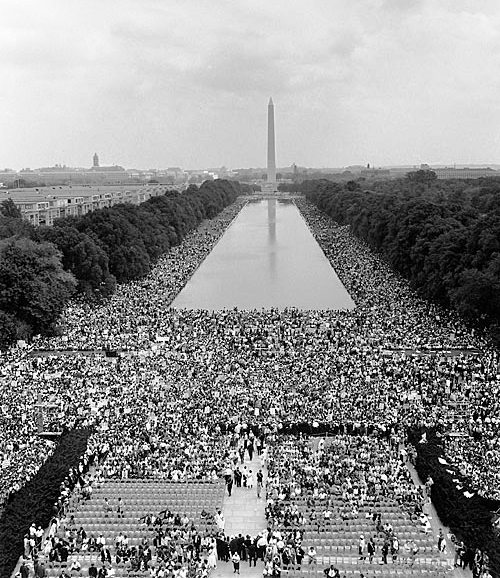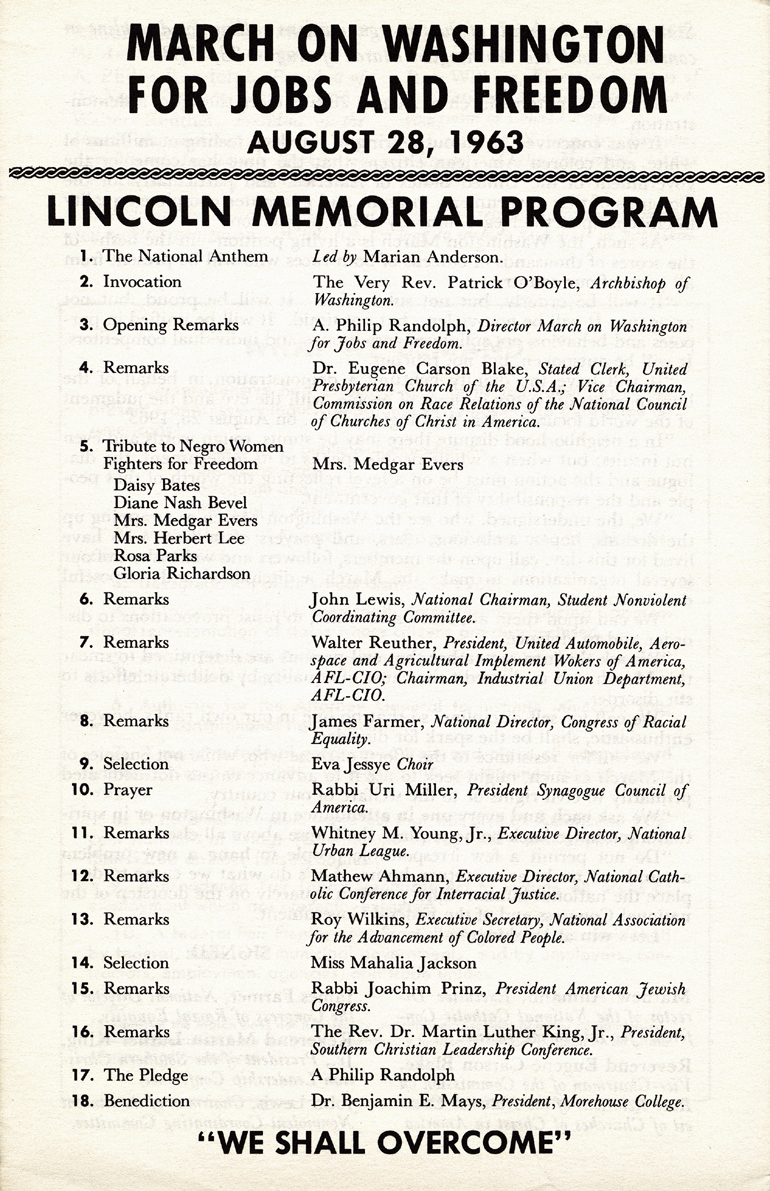The 1963 March on Washington: Behind the Scenes
By Stephanie A.T. Jacobe, Ph.D., Director of Archives, Archdiocese of Washington

A view from the Lincoln Memorial toward the Washington Monument
A quarter of a million people lined the Reflecting Pool at the Lincoln Memorial on the afternoon of Wednesday, August 28, 1963. The crowd would converge on the city of Washington on that warm afternoon by plane, train and bus. Locals from around Washington quietly walked down to the National Mall to join the March for Jobs and Freedom. That afternoon they would hear ten speakers including the late Congressman John Lewis and the Reverend Dr. Martin Luther King Jr. At the beginning of the program, Most Rev. Patrick O’Boyle, Archbishop of Washington, was invited to give the invocation. He asked the Lord to bless all men and women gathered there for the cause of justice and equality. But behind the scenes, people throughout the Archdiocese of Washington were working to support this moment in history.
A full-time office to coordinate local and national Catholic participation in the March was set up well in advance by the Catholic Interracial Council of Washington at St Augustine’s Church. The office was headed by Dr. C. Joseph Nuesse, president of the Catholic Interracial Council of Washington and a professor of sociology at The Catholic University of America, who later served as the university’s provost.
Special Masses were offered for anyone who attended the march at 9 a.m. on Wednesday at the Basilica of the National Shrine of the Immaculate Conception, the Cathedral of St. Matthew the Apostle, St. Augustine’s Church, Holy Redeemer Church on New York Avenue NW, and the Shrine of the Sacred Heart in Mount Pleasant.

This program listed the events scheduled at the Lincoln Memorial during the August 28, 1963, March on Washington for Jobs and Freedom.
Those who came to the March on Washington from out of town were told that they should plan to go and come on the same day, which is why the program was planned for the afternoon. In the 21st century we have little memory what it was like for people of color to travel throughout the United States. Few people have heard of the Green Books. Published from the 1930s until 1963, the Green Books provided guidance for African-American traveling during segregation on where to stay overnight and where to eat (check out this online collection at the New York Public Library). In the District of Columbia only seven hotels accepted African-Americans in 1962. There were also seven tourist homes, which were private homes in which travelers could rent rooms for the night. For the 250,000 people who came to Washington for the march, there were simply not enough places for African Americans to stay.
And of course many could not get transportation in and out on the same day so the city and its churches opened their doors. The Archdiocese of Washington provided overnight housing, dinner and breakfast for more than 2000 participants of the march. Hostels were set up at the gymnasiums at Georgetown University and at Catholic University, and the schools and parish center buildings at St. Augustine Parish, Shrine of the Sacred Heart, Holy Redeemer Church, and the Holy Comforter Church.
The Knights of Columbus Supreme Board of Directors donated $25,000 to support the Catholic hostels, which equates to just over $200,000 today. An integrated Knights of Columbus Committee manned the housing center set up by the Urban League all day on Wednesday in tents near the Washington Monument taking applications and issuing tickets to the various hostels.
Hospitality committees at each site remained on duty all night to assist the guests. At the parishes the hospitality committees consisted of representatives of the Archdiocesan Council of Catholic Women and various other parish organizations. The hostel at Catholic University was staffed by the local Knights of Columbus and at Georgetown University by university staff.
The march was sponsored nationally by the National Catholic Conference of Interracial Justice, National Liturgical Conference, the Knights of Peter Claver, the National Catholic Social Action Conference, and the Alumni Guild of Catholic University and locally by the Catholic Interracial Council of Washington, the Third Order of St Francis, Young Christian Workers, and the Knights of St John. Parish groups from across the Archdiocese participated on that historic day.
